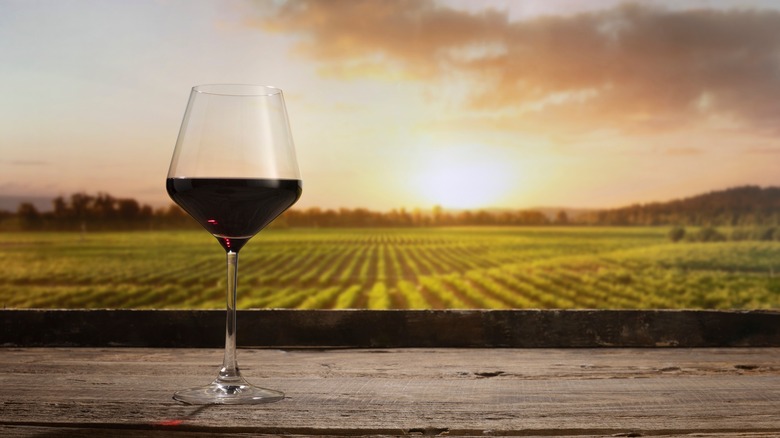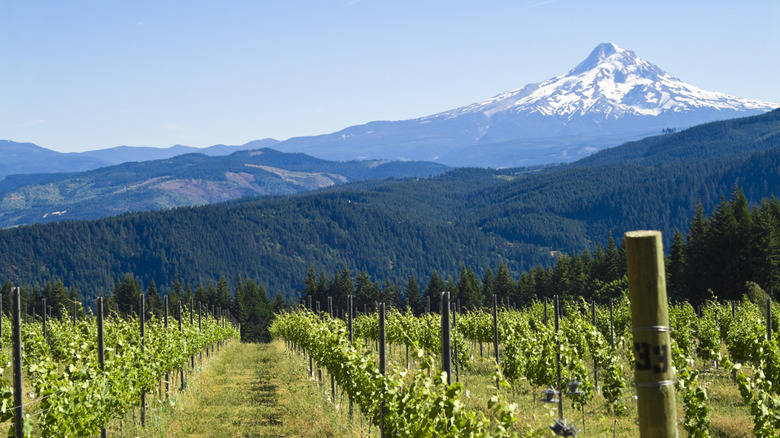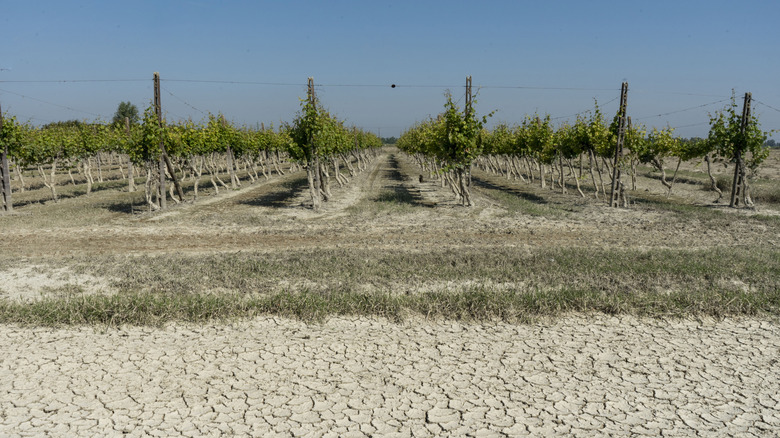How Geography Affects Your Wine's Alcohol Content
Like all alcohol, wine develops booziness as a byproduct of fermentation: the process of yeast eating sugar. Grapes with a higher sugar content have the potential to have a higher ABV (alcohol by volume). It's not always a surefire way to identify a boozy wine — a winemaker can choose to stop fermentation early for a sweeter, lower ABV wine, or can take a lower-sugar juice and add sugar to bolster the alcohol content. But generally speaking, a grape with more sugar will yield a higher ABV wine.
So how do some grapes become sweeter than others? Some are allowed to ripen longer, intensifying their sugars. White wine grapes are generally picked earlier at a lower sugar content — or brix — than red wines (because generally speaking, the bolder a wine is, the better it can stand up to being boozier). But even the same type of grape grown in different conditions will ripen differently. Grapes grown in hot, dry conditions will develop more brix than those grown in cool, damp conditions. This is why wines from hotter climates like Northern Australia, Southern California, and the south of Italy tend to be bigger, bolder, and boozier than wines grown in, say, Germany, Austria, or the northern Italian Alps.
Deciphering wine ABV by vineyard location
Learning to intuit the characteristics of wine can be intimidating, especially when faced with the old-world style of labeling that gives very little flavor text about the wine in the bottle. One way to know a little more about what you'll find in that bottle is to understand how geography affects the characteristics of the wine. If grapes develop higher sugars and therefore higher potential for booziness in hotter, drier climates, then grapes grown on south-facing, low-elevation slopes closer to the equator in an arid region will be bolder and boozier than even the same type of grape grown on a north-facing, temperate, more precipitous mountainside.
For example, a merlot grown in the high desert of Walla Walla, Washington — like one from Seven Hills Winery — will have an ABV of 14.4%. Conversely, a merlot grown within the Cascade rain shadow below Mt Hood — like one from Alexeli Vineyard — will have an ABV of 13.3%. A French Côte du Rhône wine could be from the Alps or the Mediterranean. Higher elevation Rhône towns like Condrieu and Diois are known for their lower ABV white and sparkling wines. Even a red blend from Condrieu — like the 2019 Domaine Duclaux La Germine Côte-Rôtie, made from syrah and viognier grapes — is only 13% ABV. Compare that with a syrah of the same year from just 115 miles south — like the 2019 Les Terrasses from Châteauneuf-du-Pape, which is 14.5% ABV.
How climate change is affecting wine
You can also generally guess how bold and boozy a wine will be by knowing if an area had big climate events from year to year. A year with a cold, rainy, short summer will produce lower ABV wines with more acidity and fewer deep fruit notes, while hotter drought years will produce big, jammy, high ABV wines.
As the climate warms, though, certain grape varietals will have some rough years. The best average growing season temperature for cabernet franc ranges from 59 degrees to 66 degrees Fahrenheit. The region most famous for cab franc is the Loire Valley in France — an area that still averages 63 degrees through the growing season — but it's also a staple in Sonoma, California, which was already at 66 degrees on average as of June 2023. The hotter, drier climate there already produces higher ABV, jammier cab franc wines than their French counterparts, but a particularly hot year in Sonoma could scorch cab franc, spelling trouble for the industry. Pinot gris (also known as pinot grigio) doesn't grow as well when average growing season temperatures are above 60 degrees Fahrenheit. The white wine grapes that do best in warmer climates are viognier and sauvignon blanc.
As your favorite wine-making regions get hotter, they'll have to adapt their styles toward higher brix grapes and higher ABV, bolder wines — maybe doubling down on rosé wines made with red grapes or plant new varietals that do better in hotter, more arid areas.


